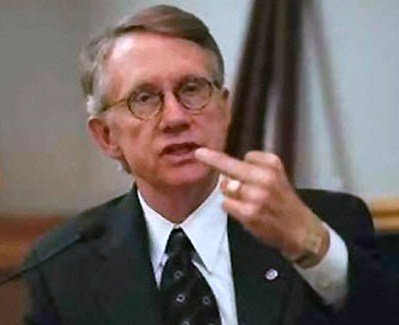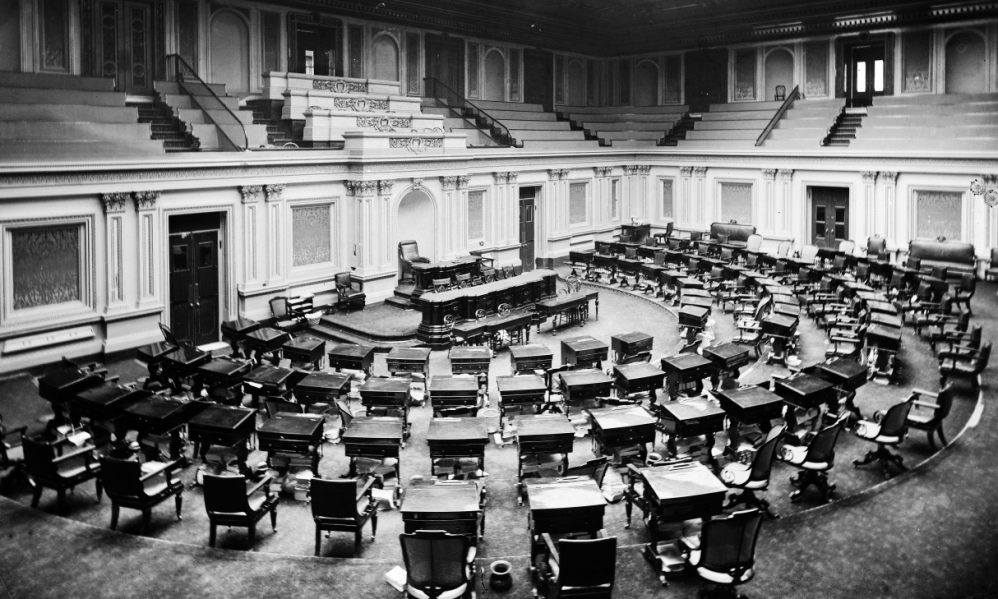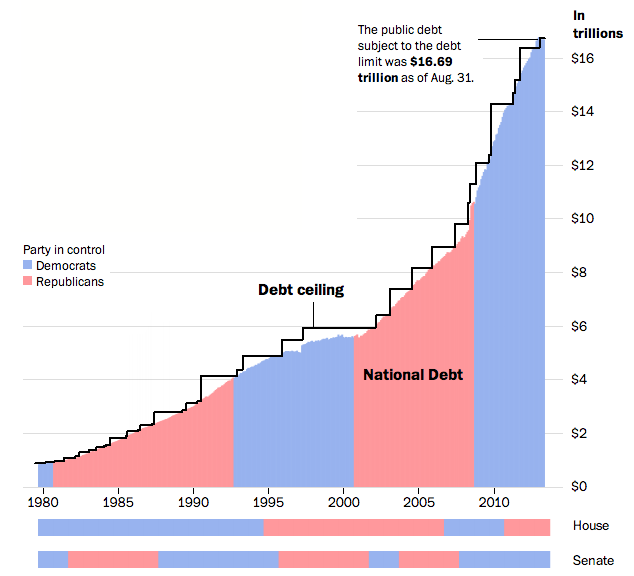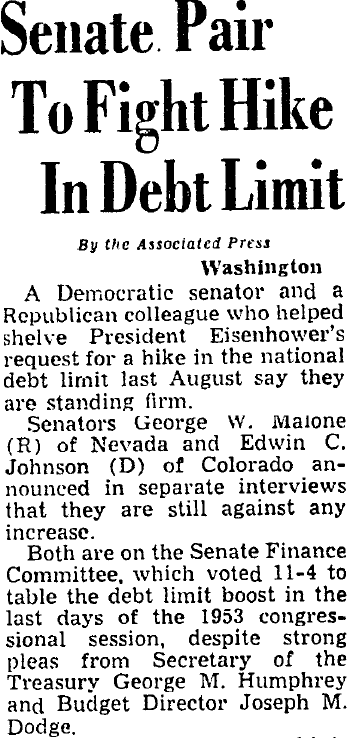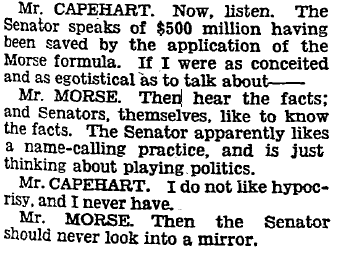By Kevin G. Hall — McClatchy Washington Bureau
WASHINGTON — Wondering who to
thank for the bizarre rules that allow Congress to approve spending,
then later slam the door on new borrowing to pay the bills? Thank the
Founding Fathers.
Article 1 of the U.S. Constitution grants
Congress the exclusive powers to legislate and the power of the purse.
In fact, Section 8 of the first article deals specifically with paying
debts.
But the Constitution’s Article 2 empowers the president to
carry out the laws passed by Congress and run the government at the
levels authorized and appropriated by Congress.
In that simple
civics lesson is the root of the problem. Congress passes legislation to
spend, but it’s the president who must ensure those bills get paid.
Those two objectives don’t neatly line up. President Barack Obama
complains that past presidents haven’t been subjected to the types of
conditions being asked of him in exchange for lifting the debt ceiling,
but it just isn’t true. To the contrary, there’s plenty of precedent.
“In the past, Congress has responded to make sure that the Treasury can
still keep borrowing, but debt and budgets have always been
contentious,” said D. Andrew Austin, an analyst in government finance
for the nonpartisan Congressional Research Service and the author of a
brief but thorough history of the debt limit.
His research shows that fights over installing a new cap on the nation’s debt are hardly a new phenomenon.
“While
the debt limit has never caused the federal government to default on
its obligations, it has at times caused great inconvenience and has
added uncertainty to Treasury operations,” Austin wrote.
The
Constitution created the backdrop for fights between Congress and the
president over spending and taxes, but the actual statutory limit on
just how much debt the federal government can incur began almost 100
years ago, with the Second Liberty Bond Act of 1917.
Before then,
Congress had from time to time given the Treasury Department authority
to issue bonds to raise money for special projects. And Congress had
authorized borrowing for specific reasons such as for building the
Panama Canal.
The issuance of long-term Liberty Bonds changed the
game. They were authorized so that the federal government could better
hold down its borrowing costs as it funded America’s entry into World
War I. In 1919, the debt ceiling was about $43 billion, but at the close
of the fiscal year debt actually stood at about $25.5 billion, with
Congress reluctant to borrow all that was authorized.
Several
decades of congressionally mandated debt limits followed, and it gave
Treasury officials more autonomy to issue debt. Austin’s report notes
that at the start of World War II, the U.S. debt ceiling of $45 billion
was just 10 percent higher than the $40.4 billion in actual debt. Actual
borrowing matched up more neatly with authorized amounts. Until the
cost of World War II exploded, that is. By 1945, the debt ceiling was
set at $300 billion.
The debt ceiling actually fell, to
$270 billion, after the war and stayed there until about 1954. The
Korean War was paid for through higher taxes, not more debt. And between
1954 and 1962, the debt limit fell twice and increased seven times. It
didn’t return to the World War II high-water mark again until March
1962.
From
that point forward, there were 69 changes to the debt limit through the
end of the 2007-2008 fiscal year, including the largest single-chunk
increase, $984 billion in May 2003, as America borrowed to pay for wars
in Afghanistan and Iraq while also cutting taxes.*
During
the 1980s and early 1990s, there was brief respite from the
politicization of the U.S. debt ceiling. Lawmakers had grown tired of
passing spending increases and then voting against raising the debt
ceiling for their profligate spending. It made them appear hypocritical
in front of the voters, and that second vote to allow more borrowing
never played well back home.
In 1979, up-and-coming
Missouri Democrat Dick Gephardt, who later became House majority leader,
won a parliamentary ruling that allowed any final vote on a budget to
automatically raise the debt ceiling.
The so-called Gephardt Rule
was welcomed by both major political parties because it eliminated the
need to take that separate and politically costly vote to raise the debt
ceiling. Over time, it lost its luster because senators amended the
budget passed by the House, meaning it had to come back to the House for
another vote, which had the same effect as voting to raise the debt
ceiling.
The Gephardt Rule, however, ended when Republicans took
back the House of Representatives in the 104th Congress and in 1995
Georgia Republican Newt Gingrich became House speaker. He saw an
opportunity to use the debt ceiling for political leverage.
“It
was looked at by conservatives as another opportunity to take a whack at
the fiscal situation . . . since the Senate was historically amending
the debt limit,” said William Hoagland, a former Republican staff
director for the Senate Budget Committee.
Since the demise
of the Gephardt Rule, whichever political party controlled the Congress
has generally used the debt ceiling as a political tool, returning to
the 1970s practice of increasing spending but also voting against
raising the debt ceiling.
In one example, Sen. Barack Obama took
to the Senate floor on March 16, 2006, in opposition to raising the debt
ceiling while George W. Bush was president.
“Increasing America’s debt weakens us,” Obama argued then.
That month, China held $635.4 billion in U.S. government debt. By this July, that number had doubled to nearly $1.28 trillion.
Some
experts actually see value in the frequent fights over raising the debt
ceiling, because they force the two major parties to bridge divides.
“In
fact, debt limit increase bills have served not only as vehicles for
bipartisan fiscal reform measures, but catalysts for subsequent
negotiations about debt reduction,” wrote Anita Krishnakumar in the 2005
edition of the Harvard Journal of Legislation.
“Upon careful evaluation, it is clear that the statute retains enduring value.”
* Not quite...
From the Congressional Research Service:
On 02.17.09, the debt ceiling was increased by $789 billion (P.L. 111-5) from $11.315 trillion to $12.104 trillion.
On 12.28.09, the debt ceiling was increased by $290 billion (P.L. 111-123).
On 02.12.10, the debt ceiling was increased by $1.9 trillion (P.L. 111-139).
On 2 August 2011, President Obama signed the Budget Control Act of 2011 into law, which increased the debt ceiling by $2.1 - $2.4 trillion in three stages. Upon his signature, the debt ceiling was increased by $400 billion. The second tranche of $500 billion was triggered on 22 September 2011. On 01.12.12, presidential certification triggered a third, $1.2 trillion increase on 28 January 2012.
Federal debt reached its limit on 12.31.12. 'Extraordinary measures' were estimated to allow payment of government obligations until mid-February or early March 2013. H.R. 325, which suspended the debt limit until 19 May 2013, was passed by the House on 01.23.12 and by the Senate on 01.31.13. Obama signed it into law on 02.04.13.
According to the White House Office of Management and Budget, those 'extraordinary measures' amount to about $550 billion, which means that $6.7 trillion has been added to the national debt under the Obama presidency and we now have an estimated $17.25 trillion national debt.
For those keeping score at home, that adds up to $5.929 trillion in debt ceiling increases and 'extraordinary measures' on Obama's watch, which has lasted 4 years, 8 months, and 15 days so far.
Under BOOOOOOOOOOOOOSH?
Per the CRS:
06.28.02: $450 billion (P.L. 107-199)
05.27.03: $984 billion (P.L. 108-24)
11.19.04: $800 billion (P.L. 108-415)
03.20.06: $781 billion (P.L. 109-182)
09.27.07: $850 billion (P.L. 110-91)
07.30.08: $800 billion (P.L. 110-289)
10.03.08: $700 billion (P.L. 110-343)
That totals to $5.365 trillion in debt ceiling increases over a span of 8 years.
Again, Obama has increased the debt ceiling by $5.929 trillion in 4 years, 8 months, and 15 days.
But, you see, according to JustTheЯ3t@rD, $5.929 trillion is 1/3rd of $5.365 trillion or something.
http://tinyurl.com/oqv8alw
